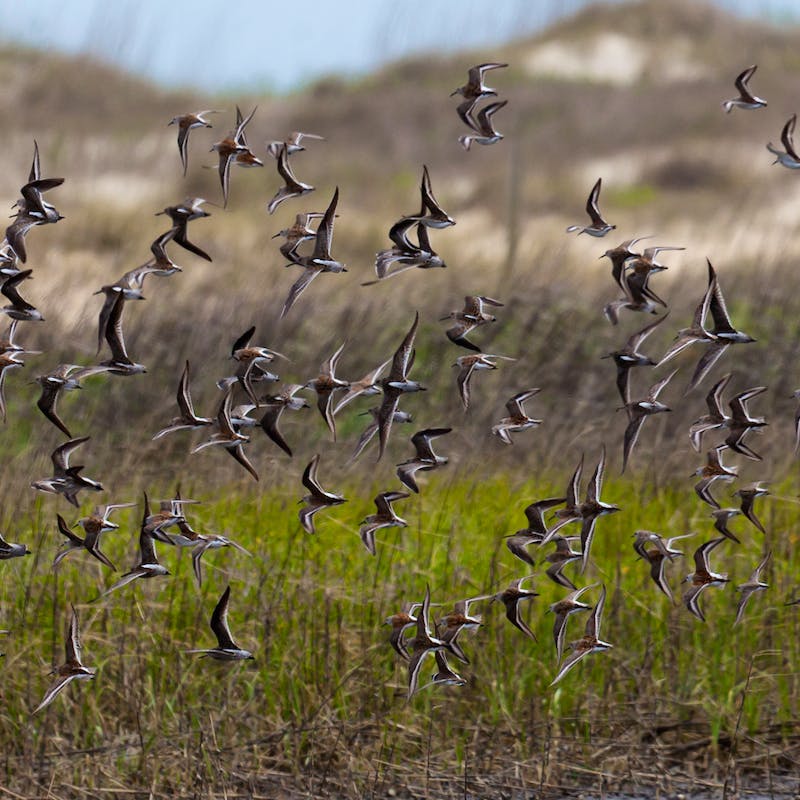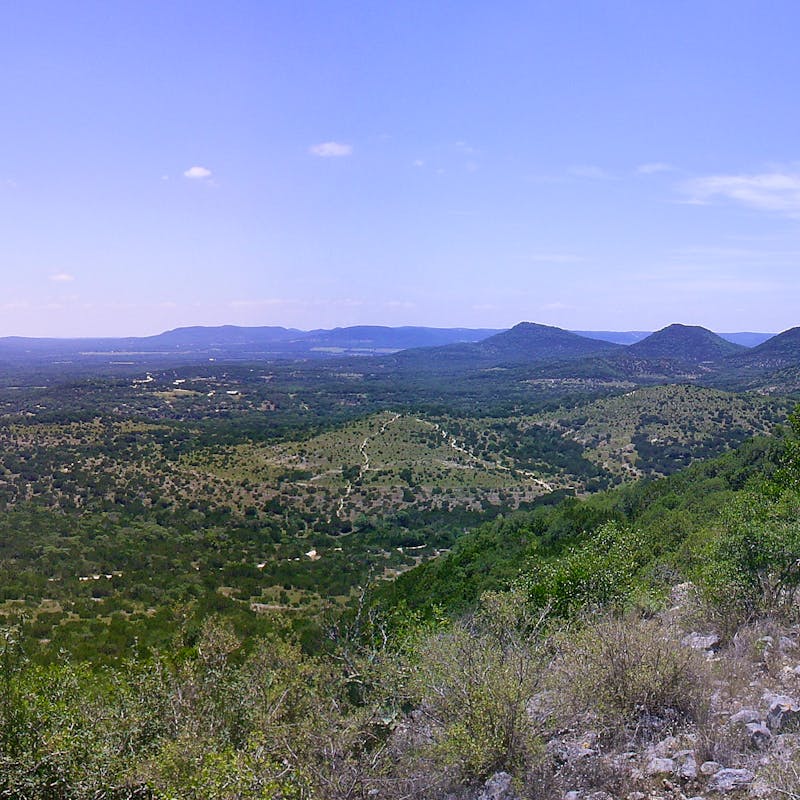Join our mobile Rapid Response Network!
You can be the first to hear about how we’re going to hold this administration accountable and how you can fight back for wildlife!
Named for the bright yellow markings on the bird’s head, the golden-cheeked warbler is a small Neotropical migratory songbird.
Golden-cheeked warblers are special to Texas nesting nowhere else in the world. The warbler breeds and raises its young in the Ashe juniper and oak woodlands of central Texas before flying to the mountain pine and oak forests of southern Mexico, Guatemala, Nicaragua and Honduras.
Why are golden-cheeked warblers endangered?
The warbler was listed as endangered under the Endangered Species Act in 1990, due to the dramatic reduction in its habitat. Habitat has been cleared for development, agriculture and livestock grazing.
The golden-cheeked warbler’s greatest threats are habitat loss and fragmentation in its breeding grounds in Central Texas and wintering sites in Mexico and Central America. As the metropolitan area from Austin to San Antonio expands west into the Texas Hill Country, this urban growth is drastically reducing the prime Ashe juniper – oak woodlands the warbler needs for breeding and foraging. Habitat fragmentation also allows predators to reach the warblers and their nests more easily.

Defenders' Impact
Defenders has long fought for the protection of golden-cheeked warblers and their habitat. In 2017, Defenders partnered with other conservation groups to defend this warbler’s ESA status. Defenders’ Center for Conservation Innovation published a scientific paper in 2022 in the Avian Conservation and Ecology journal highlighting more than three decades of suitable habitat decline for golden-cheeked warbler.
Defenders is active on the ground, contributing to the restoration of this warbler’s mixed forest habitat. Defenders also engages with the public through events, outreach and activism to uplift and restore golden-cheeked warblers and their habitat.
What You Can Do
Keeping cats indoors, making windows bird safe and participating in local Lights Out actions can all protect migrating birds. Participate in community science efforts to document warbler sightings in eBird. Drink bird-friendly, shade-gown coffee to help protect wintering habitat. Share facts about golden-cheeked warblers and their habitat with your friends and family.
If you live in an area where golden-cheeked warblers frequent, help protect habitat by maintaining old-growth Ashe junipers on your land and supporting your local parks and conservation organizations in protecting warbler habitat. Sharing information about Ashe juniper benefits to help dispel the myth that Ashe juniper is bad for the region.

About
The golden-cheeked warbler breeds exclusively in Texas, in dense old-growth and mature regrowth juniper-oak woodlands in the Texas Hill Country. They winter in the mountain pine and oak forests of southern Mexico, Guatemala, Honduras and Nicaragua.
The golden-cheeked warbler population dropped by 25% since it was listed as endangered in 1990, according to the U.S. Fish and Wildlife Service. There was an estimated 27,000 breeding pairs in 2019.
The bird hops between branches and occasionally on the ground while foraging. Males often occupy the same territory in subsequent breeding seasons and vigorously defend their territory against other males. They can often be identified by their territorial song as they forage among trees.
These songbirds are dependent on Ashe juniper trees for bark strips used in constructing nests. Females do most of the nest building work while the male stays close by, singing and defending his territory during incubation.
Males usually reach the breeding grounds in central Texas before the females and begin establishing territories. Females begin building nests mid-late March, 2-5 days after arrival on central Texas. The first clutch is initiated late March to early April and a second brood may be initiated in May. Nests usually are built in Ashe junipers or various hardwoods in closed-canopy woodland, both in Males usually reach breeding grounds in central Texas before the females and begin establishing territories. Females begin building nests mid to late March, two to five days after their arrival in central Texas. The first clutch is laid between late March and early April and a second brood may be initiated in May. Nests are usually built in Ashe junipers or various hardwoods in closed-canopy woodland, both in canyons and on upland plateau areas. The female usually lays three to four eggs, and the incubation period lasts 10 to 12 days.
Insects, spiders, and other arthropods during breeding season.
Publications
Read More About the Golden-Cheeked Warbler
News









